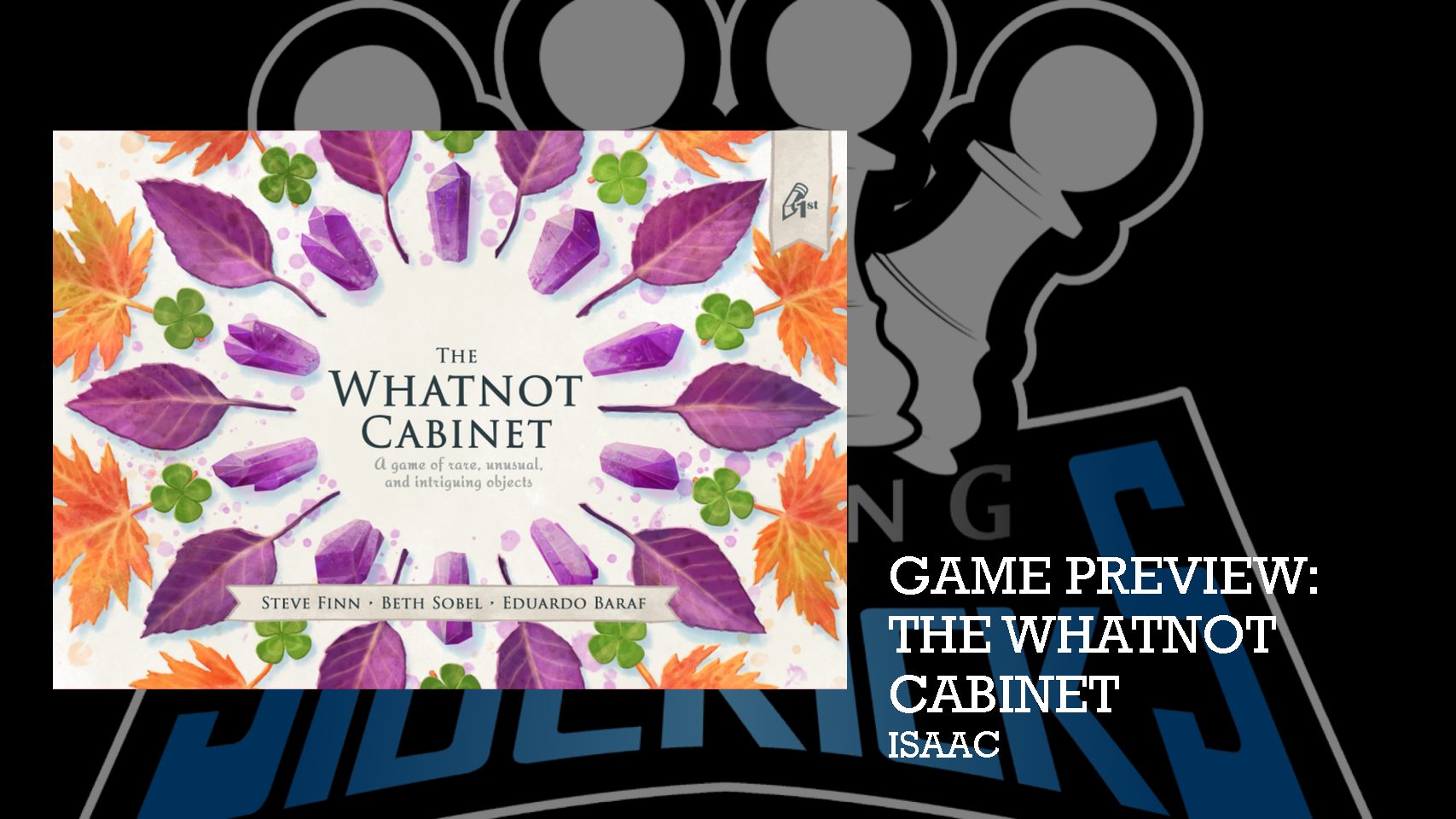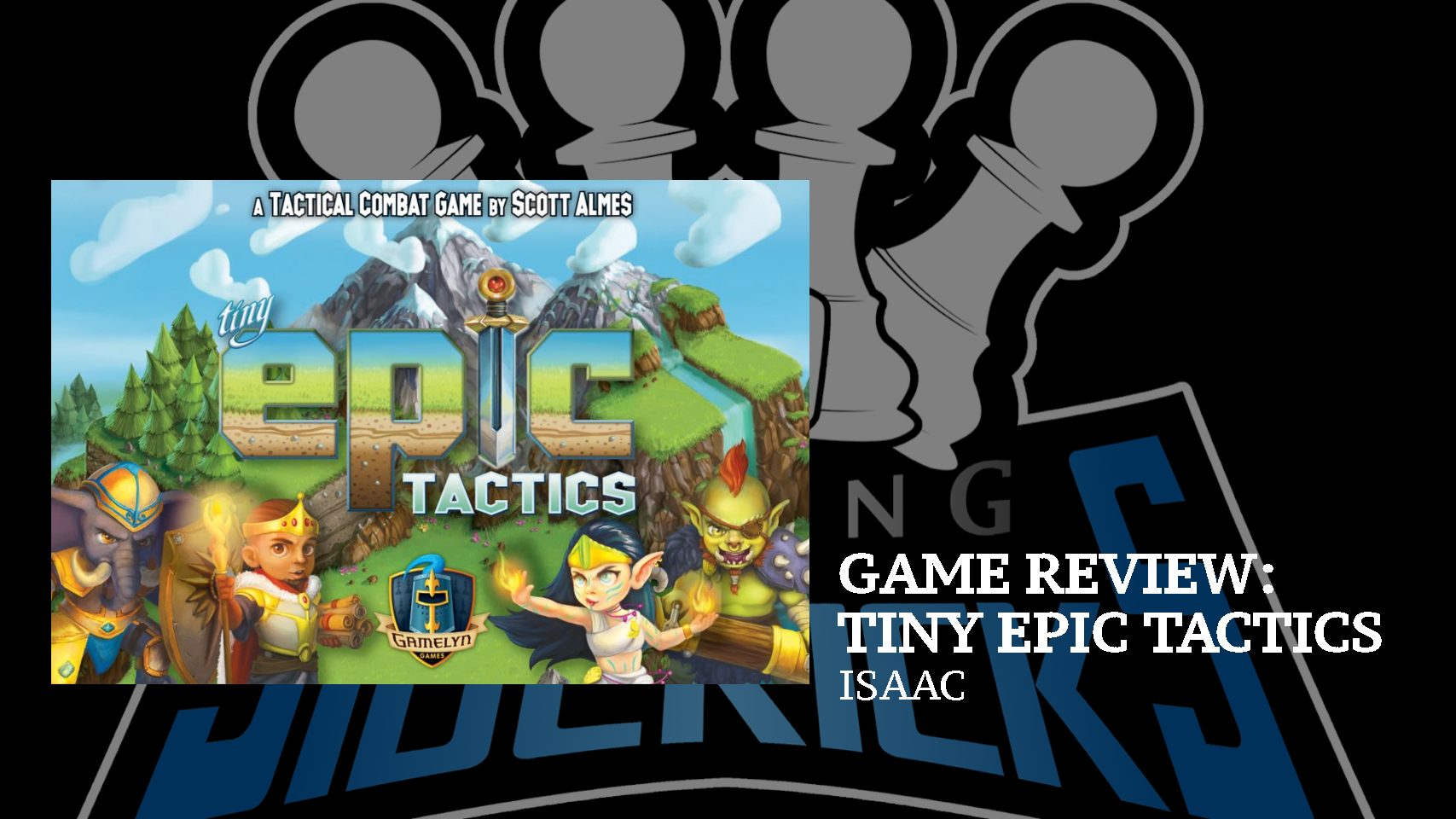
I am going to be completely honest here-when I got my copy of Skulk Hollow and saw the “coming soon” graphic and tagline for this game, I was ready for it. I was filled with immediate anticipation and excitement for the details in the teaser graphic alone. Let me throw it at you real quick and see how it sticks:

The image really stirs the imagination of what this game could be. That team attached to the bottom confirmed that the game is going to be good. The title, the art and the premise draws me and I want to know more. I hope you do also! Let’s dive right in shall we?
The Whatnot Cabinet is published by Pencil First Games and is designed by Steve Finn with development by Eduardo Baraf. Illustrated by Beth Sobel with graphic design by Kim Robinson and solo design by Keith Matejka.

Overview
In The Whatnot Cabinet, 1-4 players attempt to build up their collection of small precious objects they find in the outdoors. By collecting and arranging these objects in your own personal cabinet players will score points based on like and different set collections and various goal cards.
Gameplay
Each player begins with a Cabinet, player pawn of their color and a reference card. The main play area is set up with the Journey board, 5 face-up Curiosity cards, 1 Wonder card and an open spot for 4 Curio tiles to begin in the Outdoors. All the tiles will start in the game bag and point tokens should be available near the play area.

The Whatnot Cabinet takes place over a series of rounds, 6 rounds for 3-4 players and 3 rounds for 2 players. Each turn players will use their pawn to select an action and execute the action.
In Step 1, players will set up the Outdoors by drawing and placing 4 face-up tiles in that spot near the Journey board. This sets up the beginning of each round of play regardless of who starts.

Step 2 is where players begin with taking their turns. Looking at turn order on the Landscape aspect of the top of the board, a player will move their pawn token to any open action column to take that action immediately. After the player takes their turn, the next pawn chooses their action and executes it. When there are no more pawns on the Landscape top of the Journey board, Step 2 concludes.
Each action taken will lead to a player gaining 2 tiles to their Cabinet on their turn. The actions will ask you to draw and discard, add to the Outdoors and take tiles or sweep the whole area and draw new tiles in. Whichever action is chosen, the player will ultimately walk away with two new tiles that much be placed into the Cabinet. The gained Tile must be used immediately.

As players begin to fill their Cabinet they may earn point tokens or Curiosity cards. Players earn point tokens when they complete a row or column in their Curio Cabinet and may also earn a Curiosity Card which score extra points for the first player to accomplish it. Point tokens are scored based on creating similar or all-different items. In columns you are looking to complete 4 objects of the same color or 4 objects of different colors. Rows are scored as either all of the same object type of different object types. Points are more for similar objects and a little less for all-different ones. You may finish a row or column without meeting these conditions, if so that row or column scores no points.
There are two special action tiles that will allow you to do something a little different with your tile choice. One will allow you to sweep and add 4 new tiles and take one of them. The second will allow you to draw a random Curio tile and earn 1 point at end scoring.

Finally Step 3 is Clean up. Players will discard all tiles still in the Outdoors and move their pawns from the action columns up in to the Landscape section that corresponds.
The Game ends when players all completely fill their Cabinets. Players add up all scored points from their tokens, Curiosity cards and special action tiles played. Players will also score 1 point each for the type of tile on their Wonder card and any Crowns on their tiles. Finally if a player finishes in one of the first 3 Landscape spaces you will receive the points on the space. The player with the most Curio points at the end of the game wins!
Impressions
The Whatnot Cabinet was everything I excepted it to be and so much more. I really enjoyed the fact that this a tight game packed into a small package. The gameplay is quick but it is strategic and requires you to really think ahead what and how you will set up your Cabinet for future rounds. It is a game that lets me play out a thoughtful, challenging puzzle but without committing hours of time to it. This game is simple to get to the table but leaves room for players looking for a competitive game full of choices.

Let’s not forget one of the best parts of this game-Beth Sobel is the artist. I have not been shy in the past on how I feel, Beth is the best artist in the board game world and the detail she puts into these pieces in beautiful. The game isn’t screaming at you from a design space-it is confident and strong in the simplicity of the work. The colors really pop and stand out on the tiles especially.
Overall The Whatnot Cabinet is a game that meets and exceeds my expectations. It is a beautiful game on the table and really hits that sweet spot of a competitive game that offers depth but keeps the time and clean-up to a minimum. I can play this when we only have 20 mins or so to play a game before bed in our house. Also I know it is a game my wife and kids will sit down to play anytime and for that reason, it is tops on my list. I can’t recommend this one enough! Check out the Kickstarter today at:





Be the first to comment